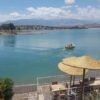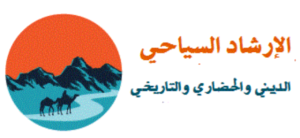Top Tips on Hiking in the Atlas Mountains in Morocco
Guides :
You don’t need a guide if you just want to whiz up Toubkal and back, but if you’re going further afield or for a longer period, then you’re going to want to engage one and possibly also a mule to cart your gear. Imlil is by far the best place to do this. There is a small Bureau des Guides et Ac- compagnateurs in the village which has a list of official guides and even mugshots up on the wall. Some of the official guides specialise in canyoning, climbing or ski- trekking. The latter, known to French trekkers as ski-mulet, involves a combina- tion of walking with mules to carry your equipment and then skiing downhill or on cross-country runs. All guides speak French and a few speak a little English.
It is important, especially in times of un- certain weather, to have an official guide with you rather than any old local who can probably lead you up the path, but won’t have a clue how to deal with any difficult situation, let alone an emergency.
More than 60 official guides are based in the Toubkal area and all carry cards to prove their training. Have a good look at the cards, and check any potential guide’s cre- dentials with the Bureau des Guides et Accompagnateurs.
Experienced guides based in Imlil in- clude Brahim Toudaoui, who speaks English and French (contacted by post at BP 37, Asni, Région de Marrakesh); Mohammed Aït Idir (BP 26, Asni, Région de Mar- rakesh); Brahim Aït Talaoul (BP 38, Asni, Région de Marrakesh); Brahim Aziam, who runs the Café Soleil in Imlil; and Mo- hammed Bouredda, whose village home is a 15 minute walk west of Imlil, on the route to Tizi Oussem.
All these guides (and many others) can also be contacted through the Hôtel Ali in Marrakesh (444979; fax 433609). Those starting off from the Ourika Valley could ask for Lahcen Izahan at the Café Azagya, about 2km before the village of Setti Fatma, who also knows the Atlas like his pockets.
Costs :
Check the current rates for mountain escorts, porters and so on published in the Moroccan Tourist Office booklet described below. At the time of writing, the rate for official guides was Dr160 a day and Dr200 for specialist guides (skiing or rock-climb- ing, for example).
A mule (which can carry the loads of up to four people) and muleteer cost around Dr80 a day, and porters from Dr50 to Dr70 a day, depending on the season and the dif- ficulty of the terrain. A cook would want Dr70 a day.
These rates apply to a normal working day and don’t include food and accommo- dation expenses. You can hire crampons and ice-axes in Imlil for about Dr50 per day.
Guidebooks & Maps :
An extremely useful booklet The Great Trek through the Moroc- can Atlas is published by the Moroccan Tourist Office every year.
Available in several languages, it in- cludes a list of guides for various regions in the Atlas (including Toubkal); of gîtes, huts, refuges and the like and the names of their owners; a of official prices for guides, mules, muleteers and porters; and a list of village market days. Recommended maximum fares on some of the public trans-port routes also appear.
This booklet is not easy to obtain in Imlil or elsewhere in the mountains. Ideally, you should grab a copy in Marrakesh or any main tourist office in Morocco or abroad.
Another useful tool to have, and equally scarce in Imlil, is a decent map. There is a mapping division in Rabat that publishes topographical maps on a scale of 1:100,000 and 1:50,000. The Jebel Toubkal area map, on a scale of 1:50,000, is useful; a set of four maps covering a wider area on a scale of 1:100,000 is also available. They can be purchased in Rabat for Dr80 a sheet (see the Rabat Information section in the North At- lantic Coast chapter for details). Toubkal maps are occasionally available in Imlil.
Those intending to do more than the two day Toubkal trek would be advised to buy the guide Great Atlas Traverse – Morocco by Michel Peyron. Volume one (Moussa Gorges to Aït ben Wgemmez) covers the Toubkal area as well as the Western High Atlas.



